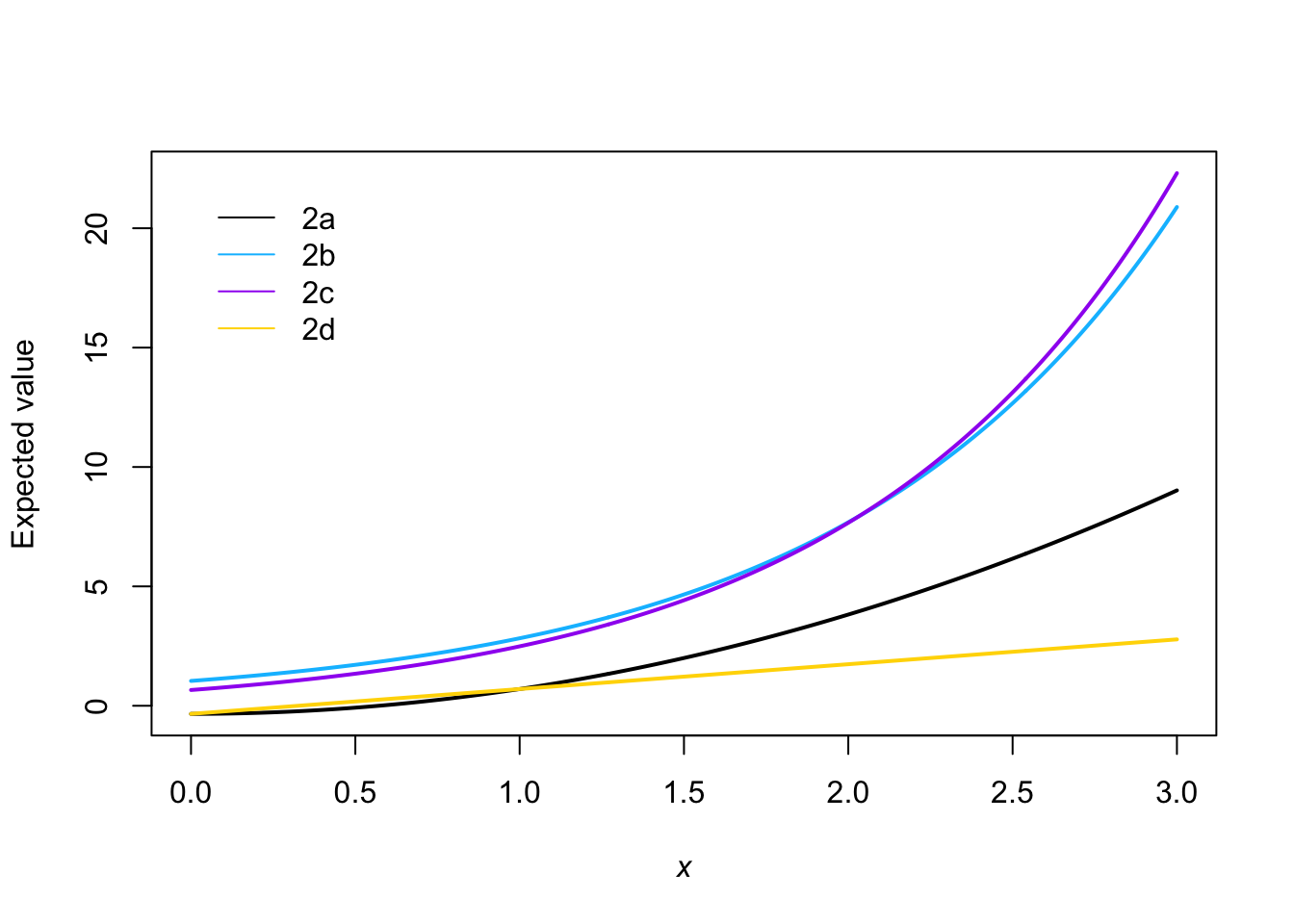40 Assignment 2 (Guide)
A mathematical model is a simplification and description of some real-world phenomenon. The model is usually expressed and communicated using a mathematical equation. The equation is deterministic and does not allow for the real-world phenomenon to have any randomness in it.
A statistical model is a simplification and description of some real-world phenomenon. The model is usually expressed and communicated using a mathematical equation and a probability density/mass function (e.g., the normal distribution). The combination of the mathematical equation and probability density/mass function enables to model to be stochastic and account for randomness in a real-world phenomenon that the model describes.
Everyone did great answering this question!!!
-
## [,1] [,2] [,3] ## [1,] 2 4 6 ## [2,] 4 10 12 ## [3,] 6 12 18## [,1] [,2] [,3] ## [1,] 0 0 0 ## [2,] 0 0 0 ## [3,] 0 0 0## [,1] [,2] [,3] ## [1,] 1 2 3 ## [2,] 2 5 6 ## [3,] 3 6 9## [,1] [,2] [,3] ## [1,] 1.000000e+00 -8.881784e-16 -1.554312e-15 ## [2,] 1.665335e-16 1.000000e+00 1.110223e-16 ## [3,] -5.551115e-17 1.110223e-16 1.000000e+00 Which of the models below are a linear statistical model? Please justify your answer using words.
- Multiple answers are correct here. This is a linear model because the only non-linear part is where the predictor variable (i.e., \(\mathbf{x}\)) is squared. Any linear or non-linear transformation of the predictor variable does not change if a model is linear or non-linear. Another correct answer is that this is not a linear model because the error term (i.e., \(\boldsymbol{\varepsilon}\)) is missing. If the error term was not missing, then it would be a linear model.
- This is a linear model because the only non-linear part is where Euler’s number (i.e., \(e\)) is raised to the \(\mathbf{x}\) power. Any linear or non-linear transformation of the predictor variable does not change if a model is linear or non-linear.
- This is not a linear model because Euler’s number is raised to the parameter \(\beta_{1}\) power (i.e., the parameter shows up in the model inside of a non-linear function).
- Multiple answers are correct here. This is not a linear model because the parameter shows up in the model inside of a non-linear function. Another correct answer is that you can easily simplify the model and show that it is the same as \(\mathbf{y}=\beta_{0}+\beta_{1}\mathbf{x}+\boldsymbol{\varepsilon}.\)
x <- seq(0, 3, by = 0.01) beta <- c(-0.34, 1.04) E.y_a <- beta[1] + beta[2] * x^2 E.y_b <- beta[2] * exp(x) E.y_c <- beta[1] + exp(beta[2] * x) E.y_d <- beta[1] + beta[2] * x col <- c("black", "deepskyblue", "purple", "gold") plot(x, E.y_a, ylim = c(range(E.y_a, E.y_b, E.y_c, E.y_d)), typ = "l", col = col[1], xlab = expression(italic(x)), ylab = "Expected value", lwd = 2) points(x, E.y_b, typ = "l", col = col[2], lwd = 2) points(x, E.y_c, typ = "l", col = col[3], lwd = 2) points(x, E.y_d, typ = "l", col = col[4], lwd = 2) legend(x = 0, y = 22, legend = c("2a", "2b", "2c", "2d"), bty = "n", lty = 1, col = col)